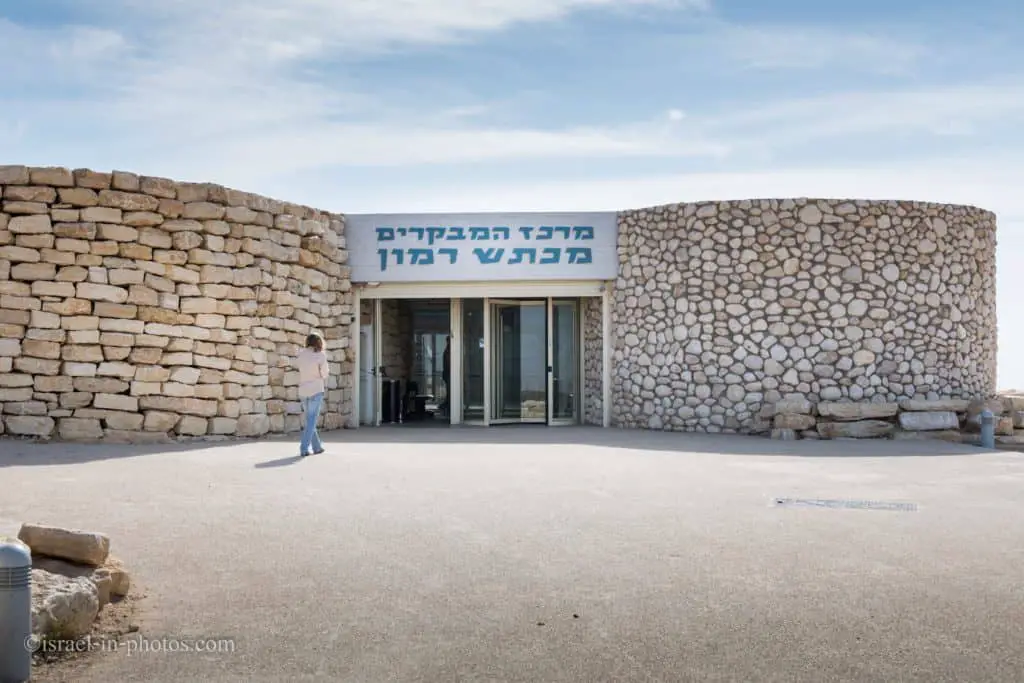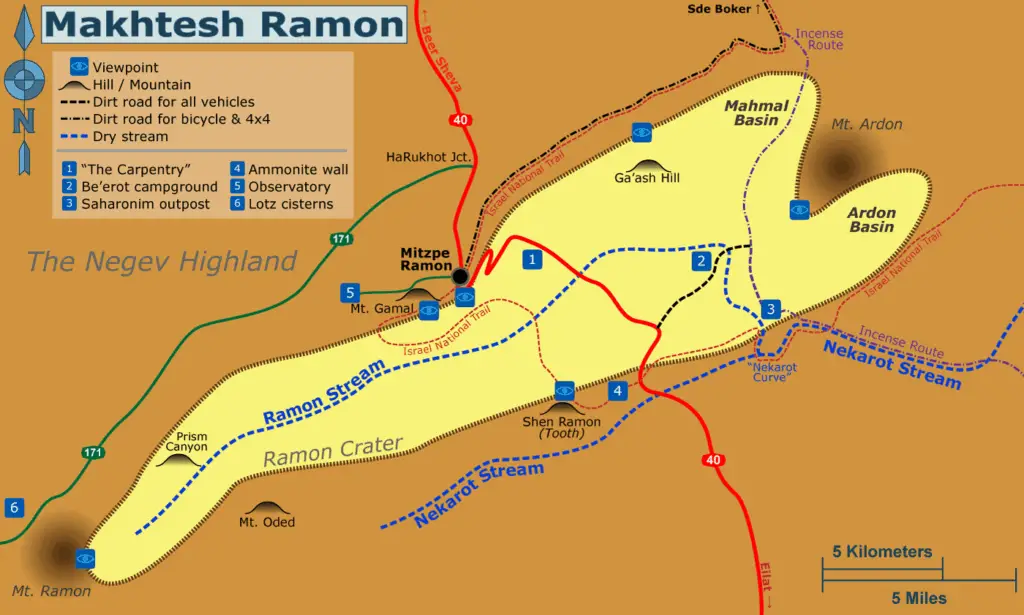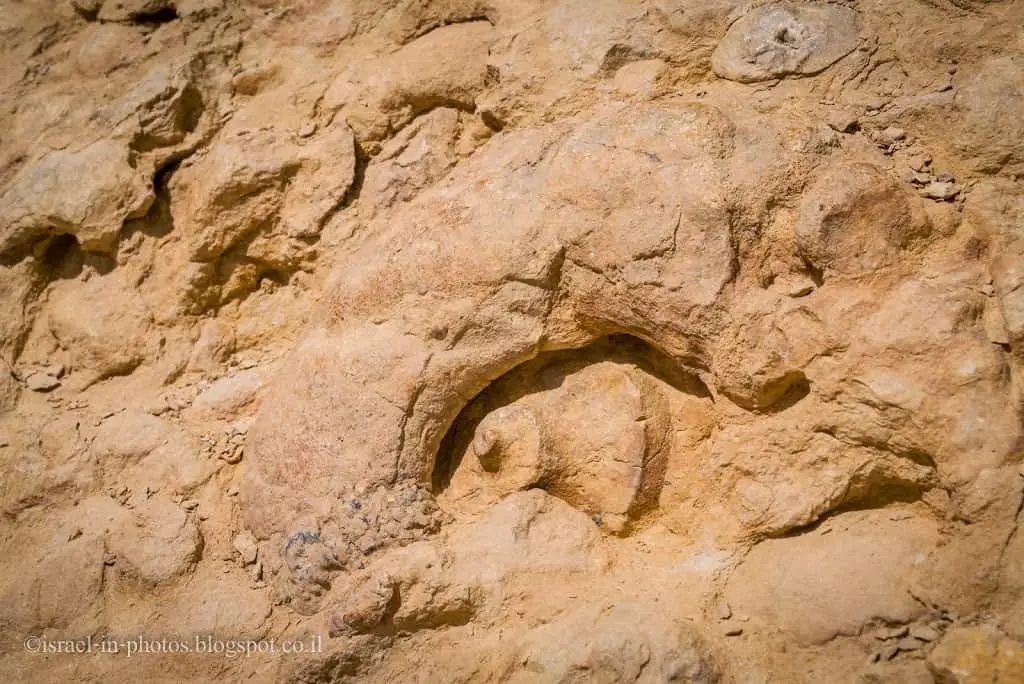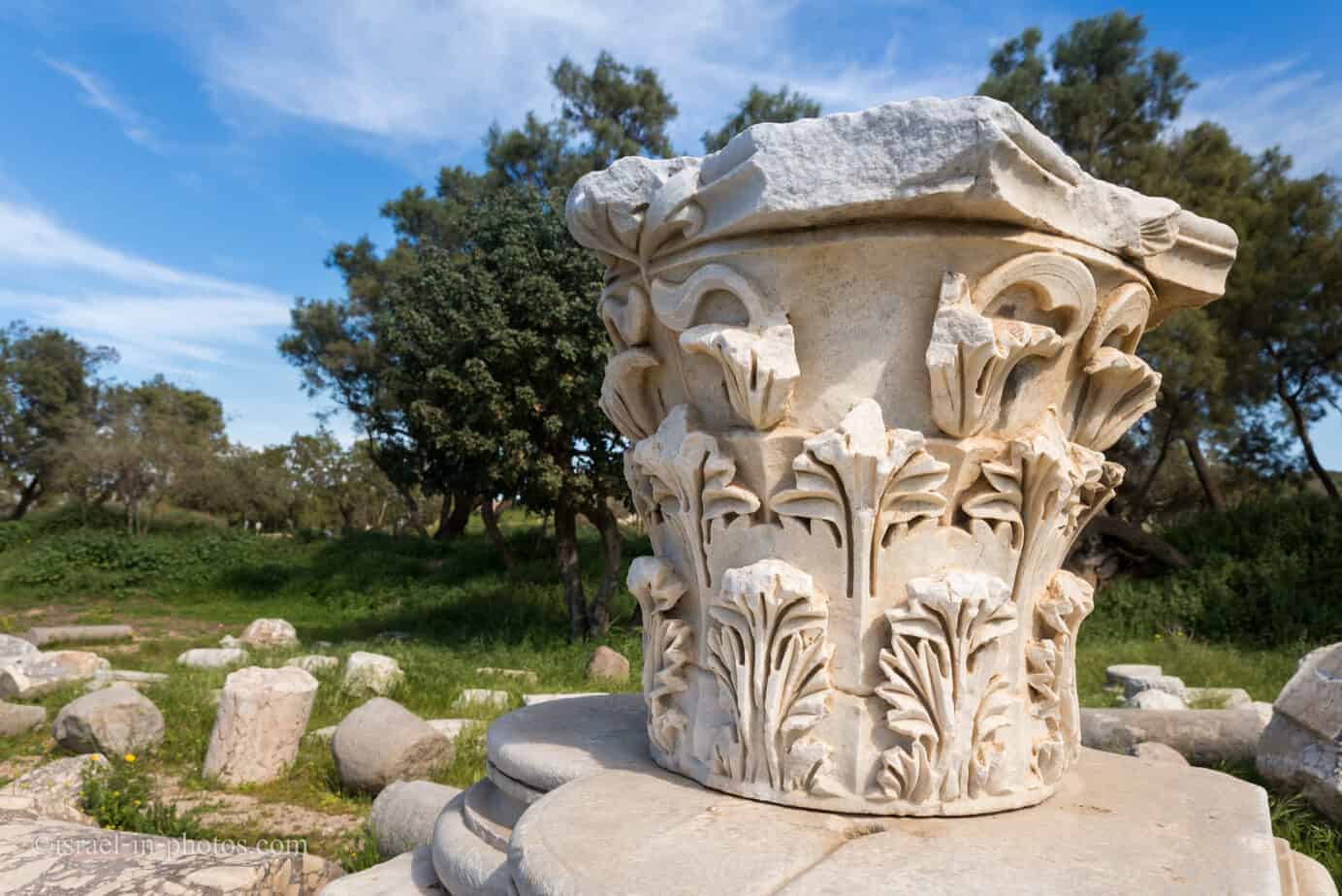Mitzpe Ramon and Makhtesh Ramon – Visitors Guide
Mitzpe Ramon is a small town in the Negev desert. And it is located on the edge of Makhtesh Ramon, a fascinating geological place.
There are many attractions, tracks, and other activities in this area. But we will start with maps to get familiar with the area.
Table of Contents
Map
Mitzpe Ramon is located in the Negev desert, approximately 80 km south of Beer Sheva. And Mitzpe Ramon is a good point to start exploring Makhtesh Ramon.
Here is a helpful map of the Ramon Crater (created by Tamuz – Own work, CC0, Link)
You can see Mitzpe Ramon with road #40, the Israeli National trail, viewpoints, and several other attractions on the map. And here is a more detailed map from the brochure at Makhtesh Ramon Visitors Center.
Note: you can click on the map to enlarge it.
Interactive map of the area:
Directions
The most convenient way of getting around in the Negev is by renting a car (check rentalcars.com to see rates). You can get to Mitzpe Ramon by bus, and here is the link to Moovit with preset origin and destination. But, if you want to hike in the Ramon Crater or get to more distant points, then buses will not be good enough.
The drive from Israel’s center area takes 2-2.5 hours (depending on your original location and traffic). I would advise making this route during daylight since most of this road is not illuminated at night.
Info about Makhtesh Ramon and Mitzpe Ramon
Before we begin, here is a short explanation about the Makhtesh and Mitzpe Ramon. Makhtesh Ramon is a geological feature in the Negev desert (the world’s largest “erosion cirque”). And on the edge of this crater, you can find the town of Mitzpe Ramon. The crater is 40 km long, 6 km wide (on average), and 500 meters deep. Together with the surrounding area, it is Israel’s largest national park, the Ramon Nature Reserve.
Mitzpe Ramon (literally Ramon Lookout) is a town in the Negev desert of southern Israel. The name Ramon comes from the Hebrew “Romaim,” meaning Romans. It is situated on the northern ridge at an elevation of 860 meters (2,800 feet), overlooking a sizable erosion cirque known as the Ramon Crater. In 2017 it had a population of 5,240.
Mitzpe Ramon was founded in 1951 as a camp for the workers building Highway 40.
Source: Wikipedia
The only settlement in the area is the small town of Mitzpe Ramon, located on the northern edge of the depression.
Source: Wikipedia


Attractions
In the following table, you can find information about attractions in this area. And below the table, you can find details about each place.
| Attraction Name | Details | Location | Rating/Number of Reviews on Google |
|---|---|---|---|
| Makhtesh Ramon Visitors Center | This visitor center tells the story of Makhtesh Ramon and Colonel Ilan Ramon. For more info, see: see Makhtesh Ramon Visitors Center. | Ma’ale Ben Tur Street, Mitzpe Ramon | 4.6/6,419 |
| Bio Ramon / Hay Ramon | Living Desert Museum is a small wildlife center that presents various desert animals. | Near Makhtesh Ramon Visitors Center | 3.9/486 |
| The Albert Promenade | Hiking along the Rim of Ramon Crater from the visitors center. Moreover, you can extend your hike in each direction. | Near the Visitors Center | |
| Abseiling | There are usually guides by the visitors center, and you can experience abseiling for a fee. | Near the Visitors Center | |
| Alpaca Farm | At this farm, you can see alpacas, and lamas, enjoy horseback rides and stay in suites and cabins. | Several km from Mitzpe Ramon | 4.5/934 |
| Stargazing | Since light pollution is low, many people come here to watch the stars. You can even find Wise Observatory 5 km west of Mitzpe Ramon. | ||
| Hiking in Makhtesh Ramon | There are many tracks of different lengths inside the crater. You can find details below. | ||
| Other activities | In the other activities section below, I listed additional popular options like cycling or joining a Jeep Tour. |
Makhtesh Ramon Visitors Center
Makhtesh Ramon Visitors Center, also known as Makhtesh Ramon – Nature Reserve and Visitors Center, is probably one of this area’s most popular attractions. This visitor center tells the story of Makhtesh Ramon and Colonel Ilan Ramon.
You can find a detailed description below. And at this point, I will only present you with this quote from the site:
Makhtesh Ramon Visitors Center – offering an experience that combines the life story of the first Israeli astronaut, Colonel Ilan Ramon, with the story of the largest Makhtesh in the world and its unique natural phenomena. The Visitors Center is built on the rim of Makhtesh Ramon, at the edge of Mitspe Ramon, overlooking the Makhtesh scenery and serving as a center for visitors to the Makhtesh.

Note: for a detailed guide, see Makhtesh Ramon Visitors Center.
Bio Ramon / Hay Ramon
Bio Ramon – Living Desert Museum, also known as Hay Ramon, is located near the visitors center, and this small wildlife center presents various desert animals. You can find more info here.
Hay Ramon – live desert park. Here is a fascinating encounter with the small animals of the desert, the majority of which hide and are concealed from our eyes. About 40 species are represented on the site, among them: lizards, snakes, turtles, porcupines, hedgehogs, falcons, and sand rats (gerbils), and more. The animals are in enclosures that simulate their natural environment. With the animals’ help, we can learn about their unique habitat and the biological and behavioral adaptations that enable them to live in a desert environment. The purpose of the Hay Ramon is to raise awareness of the preservation of nature. There is a botanical garden of desert plants around the desert park, representing six different habitats typical of the Negev with the vegetation characteristic of each one. A shelter for species of endangered plants is presently being established within the park.
The Albert Promenade
There are many hiking options in this area. Mitzpe Ramon is located on the rim of the Makhtesh, thus allowing stunning views of the surrounding area.
Moreover, the Israel National trail goes along the border of the Makhtesh. Thus you can hike along the rim. Additionally, there are several excellent viewpoints along the route.

Abseiling
Near Makhtesh Ramon Visitors Center, and probably at other points, you can experience abseiling.

You can purchase tickets for abseiling. They were not going down all the way. Instead, they descended only about 20 meters. So this activity is suitable for even younger kids.
Alpaca Farm
A little further from Mitzpe Ramon, you can find Alpaca Farm. You can not only see alpacas and lamas but enjoy horseback rides as well.
Stargazing
Since light pollution is low, many people come here to watch the stars. You can even find Wise Observatory 5 km west of Mitzpe Ramon.
If you plan on stargazing, you should check the weather in advance. I planned to shoot star trails during one of my visits, but it was too cold. I did bring hot clothes but did not expect near-zero temperatures (in February) with freezing winds. Thus I had to cancel my plan. So, if you plan to shoot stars, and Mitzpe Ramon is one of the best places in Israel, or you are just going to stay in this area, expect cold temperatures and bring proper clothing. In some winters, it is even snowing at Mitzpe Ramon.
Hiking in Makhtesh Ramon
Hiking inside Makhtesh Ramon is an everyday activity. I mentioned above that the Israel National trail goes along the border of the Makhtesh in the Mitzpe Ramon area. But it also goes through the crater. There are plenty of different routes, including part of the National Trail or various points of interest. Here are the most popular tracks.
HaMinsara
The carpentry, the sawmill, or HaMinsara allows seeing a unique phenomenon inside Makhtesh Ramon.
HaNagariya (“Carpentry Shop”) – a concentration of prism-shaped stones. The prisms result from the “baking” of the sandstone in the high temperatures caused by fiery lava erupting from the depths of the earth. The great heat transformed the rock, which, when it cooled, created thousands of polygonal pillars, and these broken pillars form the “Carpentry Shop.”
For additional details, see HaMinsara.
Ammonite Wall
Did you know that this whole area used to be underwater? You can take a trail to Ammonite Wall and see the marine mollusks from a close distance.
The Ammonites Wall – at the southern part of the Makhtesh is a rocky wall containing fossils of ammonites – marine creatures that lived millions of years ago in the sea that covered the entire Negev at that time. The Ammonites had eight arms and an exoskeleton. When they died, they sank to the seafloor, their exoskeleton filled with sediment fossilized over time, thus preserving the Ammonites’ shape. The fossils are a protected natural phenomenon, and it is forbidden to collect them.
Ein Saharonim and Nahal Nekarot Curve
Ein Saharonim and Nahal Nekarot curve is a lovely 5 km round route suitable for the whole family. You can find additional details here.
En Saharonim and Khan Saharonim – built on a hill near the En Saharonim camping area (north-east of the Be’erot camping area) is the Khan Saharonim, which served as a way-station on the Nabatean Incense Route in ancient times. From here, one can continue walking along a short trail to En Saharonim, a spring which in winter creates a stream hundreds of meters long (it often dries up in summer). The spring is surrounded by rich vegetation, and the tracks of the many animals which come to benefit from its waters can be observed.
Additional Trails
- Givat Harut (Har Geves) and Nahal Ardon is a 3.5 km cyclic route near Khan Be’erot. You can find additional details here.
- Mount Ardon (Ras Irdeiha) offers stunning views and a challenging 12 km circular hike. You can find additional details here.
- Lotz Cisterns is an archaeological site not far from Makhtesh Ramon. At Lotz Cisterns, 17 ancient water cisterns were found. Out of the 17, 8 are still full of water after winter rains. There is a 4 km round hike that takes you past most water cisterns in the area. You can find additional info here.
Other Activities
- Those who prefer cycling will be glad to know there are Bike Trails in Makhtesh Ramon. For example, there is a route from Mitzpe Ramon to Be’erot (see details here). You can also cycle On the Crater’s Rim (see details), The Farms Path, Sculpture Garden (see details), and others.
- Taking a Jeep Tour is also a popular option. Several firms offer Jeep tours inside and near the crater. Usually, these are three hours, half-day, or full-day excursions, and the price starts from 800 NIS per vehicle of eight people. You can find the operators online and contact them for additional details.
- And of course, you can go a little further and see other activities in this area. If you zoom out on the map at the beginning of this post, you will see Avdat National Park, Ein Avdat National Park, HaMakhtesh HaGadol, Mamshit National Park, and other places.

Hotels, Hostels, and Appartments
On our latest visit, we stayed at the family-oriented Ramon Inn hotel (Pundak Ramon). And if you are looking for a place to stay, you can book an apartment or a hotel/hostel room. And here is a link to booking.com for the Negev area, where you can check the availability, prices, and ratings for hotels and apartments.
Booking.comAnother option is camping.
Camping
There are several camping options inside and near Makhtesh Ramon, and Khan Be’erot is probably the most popular one. The Israel Nature and Parks Authority manage Khan Be’erot, the only campsite in the Makhtesh with running water. You can find further details here. Other options include Gvanim Stream Night Camp (free campsite), Ben Midbar Camel Tours, besides camel rides, offer tents, Lotz Cisterns campsite (free campsite), and several others.
Be’erot Camping Area – at the center of Makhtesh Ramon. The camping area is accessible to all vehicles, and its location allows visitors a convenient departure point for tours. The services provided are accommodation, water, light snacks (meals with prior coordination), toilet facilities, and garbage removal. There are a few other camping areas in Makhtesh Ramon where one can sleep overnight, but no other services are provided. The camping areas are designated to serve visitors and hikers and simultaneously reduce the disturbance of the animals’ nocturnal activities by restricting people to defined areas in the Makhtesh during night hours.
Note: unless stated otherwise, all quotes were taken from the Makhtesh Ramon – Nature Reserve and Visitors Center’s official site.
Let’s talk a little about the weather when you know where to stay.

Weather
In Events And Festivals By Season, I have presented data about the weather in Israel. Here is the data that I collected for that post:

As you can see from the table above, there are few raindrops in the winter. And the temperatures range from 15 to 30 C most of the year. But keep in mind that during winter, it might get much colder during the night. Some years even brought snow. Thus, in winter, take warm clothes, and in the summer, be ready for the heat.
Common Questions
In Mitzpe Ramon, you can visit Makhtesh Ramon Visitors Center, Bio Ramon, hike, go abseiling, visit Alpaca Farm, and enjoy stargazing. You can find additional details and alternatives in the attractions section.
Makhtesh Ramon was formed by intermittent river flow, cutting through layers of limestone and chalk, resulting in cirque walls.
The town of Mitzpe Ramon was founded in 1951 as a camp for the workers building Highway 40.
Though it is commonly referred to as a crater, Makhtesh formations are “erosion cirques.” “Craters are formed by the impact of a meteor or volcanic eruption, whereas Makhtesh is created by erosion.”
Summary
Some call Makhtesh Ramon the Israeli Grand Canyon. And though this description is not accurate, it sums it up concisely. I highly recommend visiting this area if you love hiking and cycling in the desert.
Moreover, as you saw in the attractions section, there are many points of interest, so you can easily spend several days in this area.
Have you ever been to Mitzpe Ramon and Makhtesh Ramon? Tell us about your experience in the comments below.
That’s all for today, and I’ll see you in future travels!
Stay Tuned!
Additional Resources
Here are several resources that I created to help travelers:- Trip Planner with Attractions and Itineraries is the page that will help you create your perfect travel route.
- What is the Best Time to visit Israel? To answer this question, we will consider the weather, prices, holidays, festivals, and more.
- Information and Tips for Tourists to Israel will answer the most common questions tourists have about Israel (including safety, passports, weather, currency, tipping, electricity, and much more).
- Israel National Parks and Nature Reserves include a complete list, top ten, map, tickets (Israel Pass, Matmon, combo), and campsites.
- If you are looking for things to do, here are the pages for Jerusalem, Tel Aviv, Haifa, Sea Of Galilee, Akko (Acre), Eilat, Nazareth, Safed (Tzfat), and Makhtesh Ramon.













Excellent work of educational presentation and iconographic research, geological, touristic, zoological, cultural that highlights the exception of this region, from my region.
I live in MItzpe Ramon for soon 6 months and I find that the appellation of Israeli grand canyon suits him perfectly. To attract my family to these places, I needed to comment on my photos of great hiker, and your explanations are very relevant, and inspired me well. Thank you.
Hi Joseph,
I am glad you found it useful. And if you have any questions or suggestions, please let me know.
Thanks,
Lev
This is my PB Mr Lev.
I found around Mitzpe on the way to the antennas near the Alpacas farm, blackened stones, very blackened, no campfire of course. I thought they were shipped by a very old volcano, for miles around, probably in the air, but I have not found, no trace anywhere on the net, of this very old volcano, extinct for millions of years. It seems to be Givat Galosh ??? but this name does not appear in any Google search.
Can you please enlighten me on the geological location of this volcano, who captivates me. Thank you
I cannot insert a photo of the stones but I have some.
Hi,
About four kilometers from Mitzpe Ramon you can find Giv‘at Ga‘ash (https://www.google.com/maps/place/%D7%92%D7%91%D7%A2%D7%AA+%D7%92%D7%A2%D7%A9%E2%80%AD/@30.654165,34.8627682,14z/data=!3m1!4b1!4m5!3m4!1s0x15018b4121c8e6bd:0xffbd15f7fbf0b500!8m2!3d30.6541667!4d34.8802778!5m1!1e4). I have not been there, and there is a little information online. You can find some information here: https://amudanan.co.il/w/P819919. And if you are looking for Magmatic rocks, then here is a diagram and they are marked in red (https://www.adssc.org/wp-content/uploads/2019/01/miniP10.pdf).